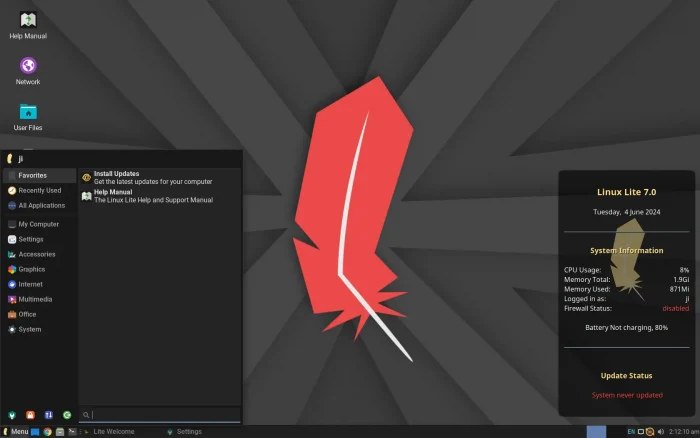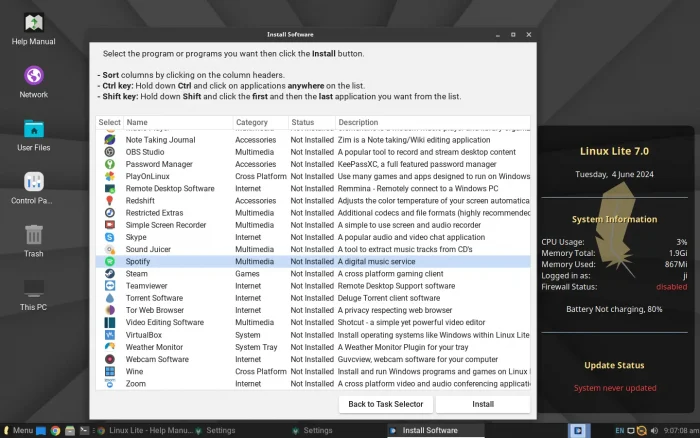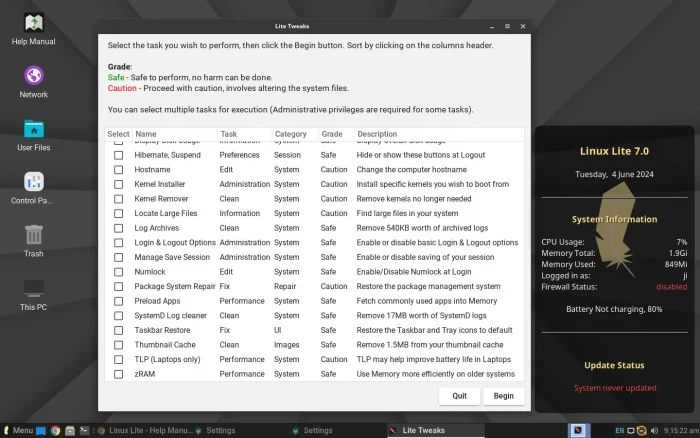Linux Lite, the lightweight and beginner friendly Linux Distribution, released version 7.0 few days ago.
Linux Lite is a free open-source (partly closed-source due to built-in proprietary apps, such as chrome) Distro based on Ubuntu LTS. It features customized XFCE Desktop environment that is lightweight for low end PCs.
Compare to XUbuntu and Linux Mint (Xfce edition), the lightweight system has a better look and feel due to the default themes, that seem to be also in use for Manjaro Linux.
The Distro aims to appeal to Linux beginners and Windows users, by trying to make the transition from Windows to Linux as smooth as possible. And, there’s NO Snap, NO Flatpak out-of-the-box.
The Linux has a welcome dialog, with quick buttons to install updates, drivers, set system restore point, and switch between light/dark themes, as well to get support and contribute to the developer team.
The Control Panel (aka Settings) includes some useful tools to easily configure the desktop. They include scaling factor setting for HiDPI monitor, a desktop widget to monitor CPU and Memory usage, “Lite Software” to install/uninstall popular apps with few clicks, such as Spotify, TeamViewer, Zoom, and more.
And it includes a “Lite Tweak” tool to do common tasks with few clicks, such as clear memory, install/remove Kernels, boot repair, save battery life with TLP, more efficient memory usage with zRAM, and more.
The new Linux Lite 7.0, code-name Galena, was released on June 1.
The release is based on the latest Ubuntu 24.04 LTS, and features updated apps including:
- XFCE Desktop 4.18
- Kernel: 6.8.0-31
- Google Chrome 125.0
- Thunderbird 115.11.0 (from MozillaTeam PPA)
- LibreOffice 7.6.7.
- VLC 3.0.20
- GIMP 2.10.36.
For more, see the official announcement via the forum thread.
Get Linux Lite:
Linux Lite so far only provides 64-bit iso image for computer with either Intel or AMD CPU.
The minimum computer specs include: 1Ghz CPU, 768MB RAM, 8GB disk space. While, preferred specs include 1.5GHz processor, 1GB RAM, and 20GB disk space. In my case, it plays very smooth in virtual machine with i5-8350U (3 cores) and 2GB RAM.















